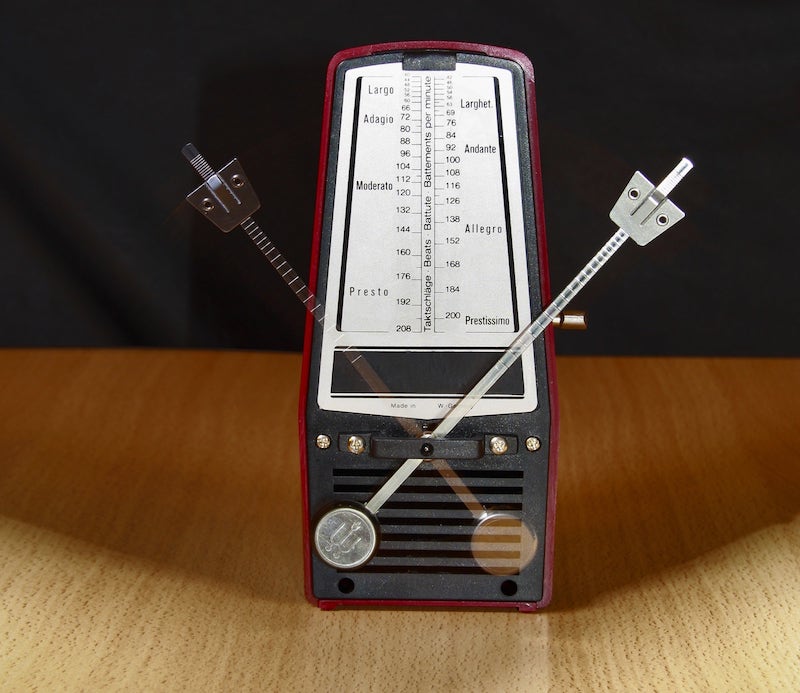Practicing music along with a metronome can seem like a chore. In this article, we discuss four ways to keep your metronome use interesting and effective.

One app we recommend you practice with is SpeakBeat Metronome, available for iPhones and iPads. While this metronome app can also tick like other metronomes, it is favoured by musicians for its unique ability to count aloud for you in a variety of voices. There are many customization options available as well, so whether you're counting in 7/8 or you need a 4 second lead-in before the counting starts, SpeakBeat Metronome will do everything you need.
Want to try out a simple metronome to see what they are all about? Check out our Free Online Metronome.
If a physical metronome is more your style, check out our article "The Best Physical Metronomes of 2020" to find the one that's best for you.
1. Slow and Steady
The metronome tip that is probably the most important and most effective is to START SLOW. When people first begin practicing with a metronome they often want to start at the tempo of the song they are trying to play. This is generally a bad idea. To build good rhythm and to be able to deliver each note accurately, it is a good idea to start at a much slower tempo and gradually build your way up. This way you are consistently reinforcing good technique and good time.
2. Ride the Downbeat
One technique that is very useful when practicing with a metronome is to mute specific beats, such as the down beat, of the metronome. This forces the musician to pay careful attention to their timing during this beat. If you are off time when the beat comes back, it means that you either need to slow down the metronome or pay more attention to your timing during that beat.
This can even be extended further to the muting of entire bars. Or cycling between 1 bar with sound and 1 bar muted. At first, you may notice that your time is way off when the sounded bar comes back.
This is similar to how a vocalist will sing a passage of a song with no accompaniment and when they are finished, check that their pitch has not wavered by playing a note on the piano. If they notice that their pitch has shifted they will adjust up or down.
3. Offbeats
This tip is an extension of the previous technique. Using the metronome to play on beats other than just the downbeats, for example, playing on the upbeat, can be a very useful technique to improving one's time.
This can be particularly useful for musicians practicing jazz. Setting the metronome to only play the back-beat (beats 2 and 4 in a bar of 4/4 time) can help improve a musician's swing feel.
Using a metronome like this can help break up the monotony of a constant click and allows for a bit of creativity in the process.
4. Metronome Ghosting
This isn't so much of a technique as it is something that happens when you are perfectly in time. If you can't hear the metronome while you are playing (and the volume is on), that is a sign that your time is improving. This is often referred to in drumming as "burying the click."
In fact, making a goal of playing perfectly in time and causing the metronome to ghost can be a good motivator for practicing with the metronome.
If you want to learn how a metronome that counts aloud with a human voice can make practicing easier, read our Voice Counting Metronome Quick Start Guide.

